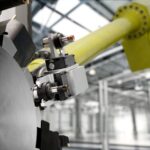Top tips for securing the investment your manufacturing business needs to grow
-Andrew Mamonitis, Vice President – APAC, Manufacturing Division, ECI Software Solutions It pays to optimise your processes and practices before expanding or bringing an external investor on board. Despite challenging conditions, manufacturing businesses are looking for ways to grow their share of the domestic market and pursue potentially lucrative export opportunities. A low Australian dollar, coupled with our country’s reputation for quality and reliability, is making it easier for some manufacturers, particularly those in the agri-business sector, to get an ‘in’ to new markets, in Asia Pacific and further afield. Seeking funding for growth Taking advantage of an opportunity to diversify your range or expand your customer base generally means upfront investment is required. You may need to acquire new equipment or additional inventory, for example, take on extra staff, or run marketing and business development campaigns. Unless your business has a sizeable sum stashed away, that means borrowing from the bank or bringing an external investor on board. But before writing a cheque, or approving a loan, any potential backer will want to see evidence that your sales are strong, your business is profitable and you’re running a tight ship. If you’re not able to demonstrate you have efficient systems and processes in place, and a solid pipeline of work, you may find it tricky to secure the funds you need to grow. Show me the money Presenting your business in the best possible light starts with showing you’re on top of your finances. Up-to-date accounts, accurate forecasting, rigorous revenue management and a strong understanding of your cash flow are all essential. So is visibility into your customer base. Being able to identify your largest and most profitable accounts and supply a detailed picture of their buying behaviours builds credibility, as does knowing which of your customers […]









